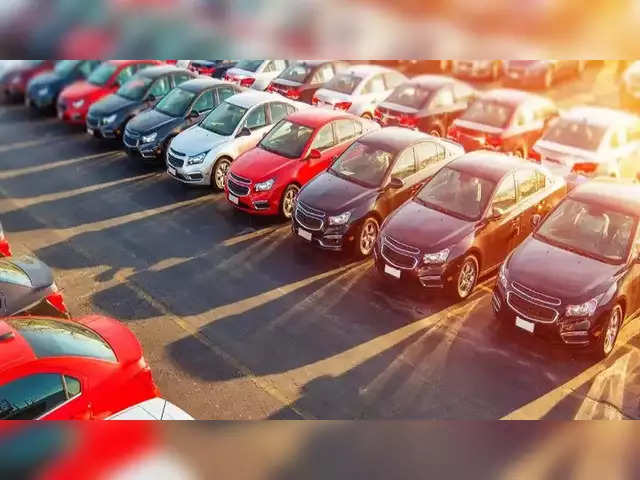Veteran industry leader and Maruti Suzuki India Chairman RC Bhargava said the sales are expected to moderate a bit next year compared to 2023.
He noted that the revival of the small car segment is necessary for the faster growth of the industry.
The share of entry-level cars in the passenger vehicle sales which stood at around 14 per cent in 2018-19 has reduced to around 4 per cent in the April-October period this year.
“As far as Maruti Suzuki is concerned, I believe that we will have higher growth than the industry,” Bhargava told PTI.
While being positive on the growth of Electric Vehicle (EV) sales next year, he noted that the focus should be towards all the green technologies which help in meeting the carbon neutrality goals. Society of Indian Automobile Manufacturers (SIAM) Director General Rajesh Menon said the sales outlook remained positive for the industry going into next year. “The overall outlook for the Indian automobile industry in 2024 looks good which can be attributed to the all-round economic growth of the country, which is also enabled with the conducive policy environment of the government,” he said.
On EVs gaining a foothold next year, he said the industry is likely to see continued increase in the share of EVs in all the vehicle segments.
“Though this phase of the FAME Scheme is scheduled to conclude in March 2024, we as an industry are optimistic that Government of India will introduce another version of FAME Scheme beyond March 2024,” Menon said.
Continuation of the FAME Scheme after March 2024 will not only help the consumers but would also enable the industry to further scale up and provide a wide range of products to the consumers, he added.
Federation of Automobile Dealers Associations President Manish Raj Singhania said the automobile sector is poised for steady growth next year with an expected low single-digit growth in passenger vehicles and high single-digit growth in two wheelers.
The outlook for green technologies and electrification in the automotive sector remains promising, Singhania said when asked about the outlook for the EV segment.
Automotive Component Manufacturers Association of India Director General Vinnie Mehta said the auto components sector is set to experience a continued transition towards electric vehicles, with increased emphasis on safety, prompted by the introduction of Bharat NCAP.
“This shift has resulted in increased integration of Advanced Driver Assistance Systems (ADAS) and enhanced safety offerings by Original Equipment Manufacturers (OEMs),” he added.
SUVs, which have been the flavour of the season, are expected to gain further momentum next year.
“This year SUV share is expected at around 49 per cent for the industry and 60 per cent for Hyundai. In 2024, we can expect the industry’s SUV share to cross 50 per cent and company’s to go up beyond 60 per cent,” Hyundai Motor India COO Tarun Garg said.
Tata Motors Passenger Vehicles Managing Director Shailesh Chandra said the company will continue to launch new products across Internal Combustion Engine (ICE) and EVs.
“We will integrate the new Sanand factory into our industrial footprint and unlock capacity. We plan to further drive deeper penetration of emission-friendly technologies by strengthening our portfolio of EVs and Compressed Natural Gas (CNG) cars,” he said and added that charging infrastructure growth remains the residual barrier for mass adoption of EVs.
Tata Motors has initiated an open collaboration with key charging players to accelerate the growth of chargers to provide a better experience to the EV buyers, he added.
Homegrown rival Mahindra & Mahindra is also looking to charge up its electrification programme further as there is an increasing customer pull, conducive policy environment and expanding charging infrastructure.
“We will witness an inflection point when the Born electric products start coming to the Indian market in a significant manner. M&M will bring its Born Electric portfolio starting 2025,” Mahindra & Mahindra Auto & Farm Sectors (Executive Director & CEO) Rajesh Jejurikar said.
Overall, the auto maker expects the industry to remain dynamic on account of positive macroeconomic outlook, he added.
In the luxury segment, Mercedes-Benz India expects an increase in the EV penetration.
“However, the tipping point is still a few years away. Customers require convincing of the ownership benefits and hassle free experience of a Battery Electric Vehicle (BEV) over Internal Combustion Engine (ICE) vehicles,” Mercedes-Benz India MD & CEO Santosh Iyer said.
He noted that in tune with the industry growth, the company expects this year to be its best year ever amid supply-chain related disruptions.
Another luxury carmaker Audi is also upbeat about electrification of its portfolio in India.
“As a brand, we remain committed to enhancing the electric vehicle infrastructure in the country and continue to invest in expanding our charging network,” Audi India Head Balbir Singh Dhillon said.
As for the 2024 outlook, he said, “the year 2023 marked a strong performance in the luxury car segment, propelled by consistent demand. Looking ahead, we remain confident about the growth prospects of the luxury car segment in 2024.


